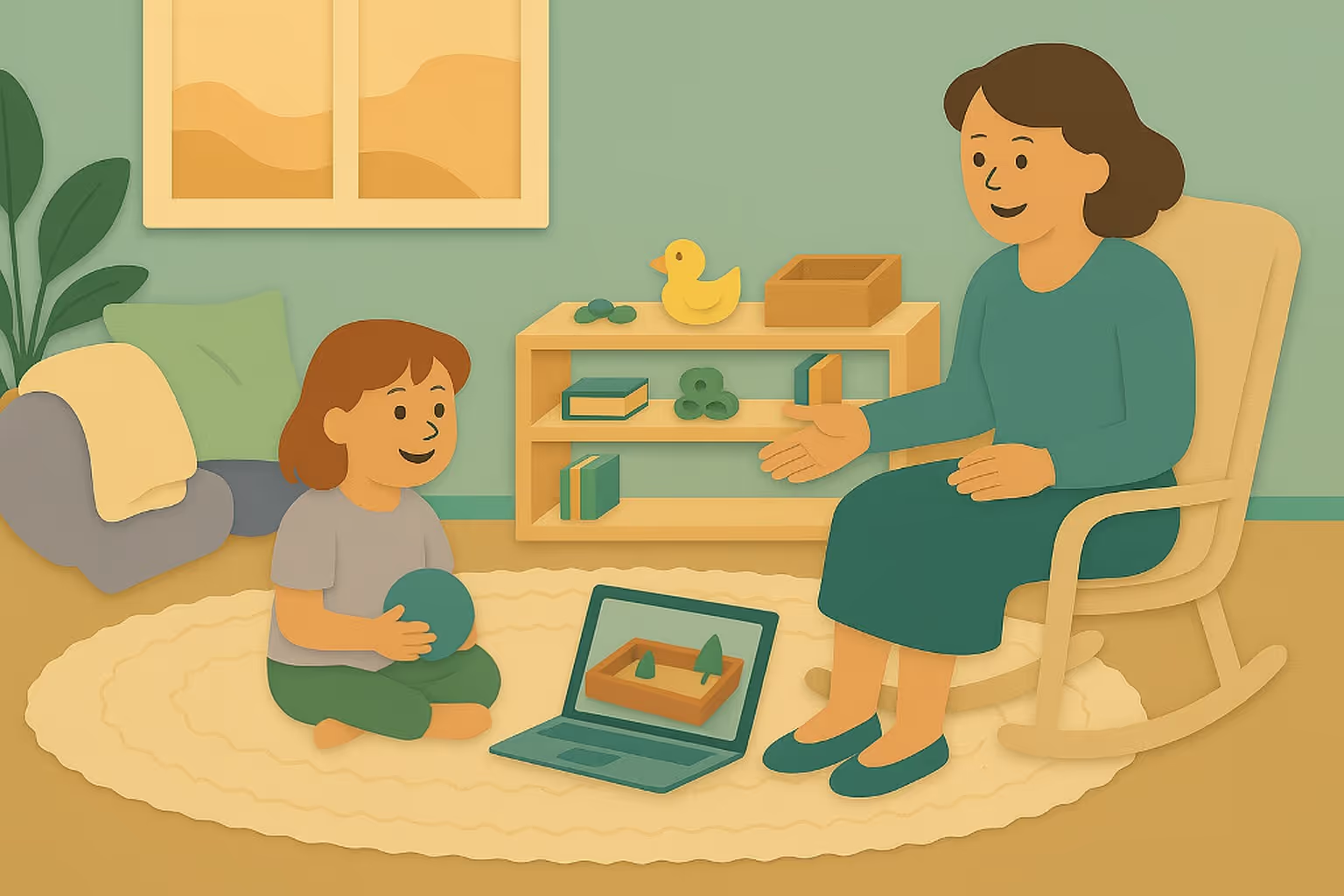Every client shows up with a unique way of experiencing the world. Some feel overwhelmed by light, sound, or texture. Others may seek movement, need pressure, or to be in the quiet. Whether you are working with neurodivergent clients or simply want to make your in-person and virtual spaces more welcoming for all, creating a sensory-inclusive therapy room can support deeper safety and connection for your clients. By making a few mindful changes, you can create a space that helps clients feel supported, regulated, and ready for meaningful therapeutic work.
Every therapy space carries a kind of tone, often before it’s talked about. Some rooms feel soft and quiet, others feel bright and focused. You might not think much about the lighting, background sounds, or textures in your space, especially if they feel comfortable to you. But for clients with sensory sensitivity, even small details can impact their ability to settle in.
Sensory-inclusive spaces refers to an environment that is thoughtfully designed to support and accommodate a wide range of sensory needs and sensitivities. For someone with sensory sensitivity, everyday sensations that others might not even notice can feel overwhelming, uncomfortable, or even painful. As a result, it’s important that clinicians intentionally create sensory-inclusive spaces that support regulation, safety, and connection from the moment a client walks in.
There’s no one-size-fits-all approach to designing a sensory-inclusive space, but intentional reflection is key. Start by noticing your physical and virtual environments from a client’s perspective: Is the lighting harsh or calming? Are there sudden noises or echoes? Is there visual clutter, strong scents, or uncomfortable seating? Consider how each element might affect someone who is already feeling anxious, overstimulated, or unsure. A sensory-considerate space doesn’t need to be perfect, it needs to be thoughtful, flexible, and responsive to the needs of the people in it.
Sensory regulation looks different for everyone. Some clients feel more grounded when they can move or fidget. Others may need stillness, quiet, and containment. A sensory-inclusive space allows for both.
In-person, consider offering a variety of sensory tools that support different needs, like a weighted blanket, rocking chair, or textured fidget. These can be placed in the room without drawing attention to them, giving clients the freedom to engage with what feels right. The goal is to create a space where clients can choose what helps them feel regulated without pressure or spotlight.
In virtual sessions, sensory support can look like inviting movement off-screen, using visual or auditory tools, or encouraging grounding activities with items in the client’s own space. Platforms like PlaySpace can help by offering interactive features that incorporate rhythm, visual stimulation or imaginative movement, all of which offer regulated sensory input.
No matter the format, the goal is the same: to offer gentle, flexible choices that support each client’s unique way of settling in and showing up.
One of the most inclusive things you can offer is choice. Sensory needs are deeply personal, and they can change from session to session, moment to moment. Let clients know they are allowed to adjust things. When in-person, you can say: “Let me know if you’d like the lights changed,” or “Feel free to sit wherever you’d like. In virtual sessions, this might mean letting the client pick the background scene or decide which activity to start with, the sandtray, whiteboard, or a game. The key in both settings is offering choice and normalization, helping to support clients in noticing what their bodies need and giving them permission to meet those needs without shame.
You will not always know what a client needs, and that is okay. You can ask with openness: “Is there anything in the space that feels distracting or uncomfortable for you?” or “What helps you feel more focused or safe in this space?” Clients may not always have an answer, but even being asked can feel affirming.
If a client seems distracted or uncomfortable, consider sensory needs as one piece of the puzzle. They may not be avoiding the work; they may just be trying to stay regulated in an environment that does not feel right for them.
Creating a sensory-inclusive space is not just about having all the right tools. It’s also about tuning in and being open to what your client needs. When the environment feels safe and welcoming, clients can relax, engage, and be themselves. Whether you’re meeting in person or online, the space you create becomes part of the experience, a subtle but powerful way to help clients feel seen, safe, and regulated enough to engage in the work therapy invites.

Lorem ipsum dolor sit amet, consectetur adipiscing elit, sed do eiusmod tempor incididunt ut labore et dolore magna aliqua. Ut enim ad minim veniam, quis nostrud exercitation ullamco laboris nisi ut aliquip ex ea commodo consequat. Duis aute irure dolor in reprehenderit in voluptate velit esse cillum dolore eu fugiat nulla pariatur.
Block quote
Ordered list
Unordered list
Bold text
Emphasis
Superscript
Subscript
.avif)